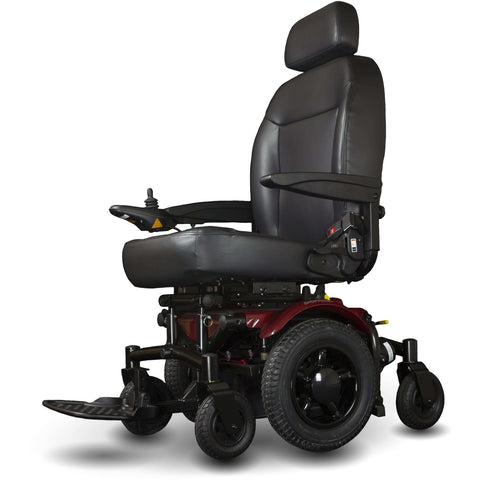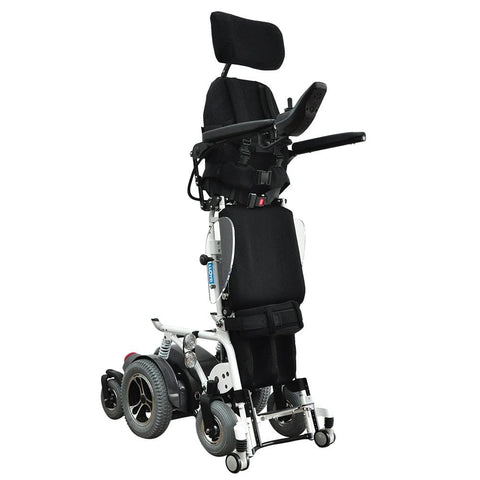
Understanding Mobility Challenges
Individuals with mobility challenges often face a myriad of obstacles in their daily lives. Whether it’s due to age, injury, or a medical condition, the ability to move freely can be severely limited. Tasks that many take for granted, such as going to the store or taking a walk in the park, can become daunting challenges for these individuals. The impact goes beyond physical limitations, affecting their emotional well-being and overall quality of life.
Simple activities like getting out of bed or climbing stairs can become monumental tasks for those with mobility challenges. The frustration of not being able to navigate their surroundings independently can lead to feelings of isolation and helplessness. These challenges highlight the crucial need for effective solutions that can empower individuals to regain their mobility and sense of freedom.
The emotional toll of mobility challenges is often underestimated. The loss of independence can have a significant impact on mental health, leading to feelings of inadequacy and a decrease in self-esteem. By understanding the daily struggles faced by these individuals, we can better appreciate the importance of personal mobility devices in enhancing their quality of life.
Empowering Independence through Personal Mobility Devices
Personal mobility devices play a pivotal role in restoring independence to individuals with mobility challenges. From wheelchairs and walkers to motorized scooters and mobility scooters, these devices offer a lifeline to those in need. By providing stability and support, personal mobility devices enable individuals to navigate their surroundings with confidence and autonomy.
The freedom that comes with using personal mobility devices cannot be overstated. It allows individuals to participate in social activities, explore the outdoors, and engage in everyday tasks that foster a sense of normalcy. Whether it’s a compact foldable wheelchair for easy transport or a versatile mobility scooter for outdoor adventures, the right device can make a world of difference in promoting independence.
Moreover, personal mobility devices are not just tools for physical mobility but also for mental well-being. The ability to move around freely can boost self-esteem and foster a sense of empowerment. By offering a means to overcome physical limitations, these devices serve as enablers of a more fulfilling and independent lifestyle.
The impact of personal mobility devices goes beyond practicality; it’s about restoring dignity and choice to individuals who have faced limitations. By empowering them to live life on their own terms, these devices are instrumental in improving the overall quality of life for those with mobility challenges.
Innovations in Personal Mobility Technology
The field of personal mobility technology has seen remarkable advancements in recent years, catering to a wide range of mobility challenges. From lightweight and ergonomic designs to advanced features such as automatic braking systems and all-terrain capabilities, the options available today are more diverse and user-friendly than ever before.
One of the key innovations in personal mobility devices is the integration of smart technology. Devices equipped with smart features like GPS navigation, remote control operation, and self-monitoring systems provide users with unparalleled convenience and safety. These technological enhancements not only improve the functionality of the devices but also enhance the overall user experience.
In addition to technological innovations, there is a growing emphasis on sustainability in the design of personal mobility devices. Manufacturers are increasingly focusing on eco-friendly materials, energy-efficient components, and recyclability to reduce the environmental impact of these devices. By aligning innovation with sustainability, the industry is not only improving the lives of individuals with mobility challenges but also contributing to a greener future.
Factors to Consider When Choosing a Personal Mobility Device
Selecting the right personal mobility device is a decision that requires careful consideration and evaluation of individual needs. Factors such as the user’s mobility level, lifestyle preferences, and intended usage should all be taken into account when choosing a device. It’s essential to consult with healthcare professionals or mobility specialists to ensure the device meets the user’s specific requirements.
Comfort and ergonomics are crucial factors to consider when selecting a personal mobility device. The device should provide adequate support and be customizable to fit the user’s body structure comfortably. Additionally, ease of operation, maintenance requirements, and portability are key aspects that can impact the user’s overall experience with the device.
Safety is paramount when choosing a personal mobility device. Features such as anti-tip mechanisms, secure seating, and visibility enhancements play a critical role in ensuring user safety during operation. It’s important to thoroughly test the device and receive proper training on its use to minimize risks and promote safe mobility.
Overcoming Social Stigma Associated with Mobility Devices
Despite the invaluable assistance they provide, personal mobility devices are sometimes associated with social stigma and misconceptions. Individuals using these devices may face prejudice, discrimination, and pity from others, which can impact their self-image and social interactions. Overcoming these societal barriers is essential to promoting inclusivity and acceptance for all individuals.
Education and awareness play a crucial role in dispelling myths and negative attitudes towards personal mobility devices. By fostering a culture of empathy and understanding, society can create a more supportive environment for individuals with mobility challenges. Encouraging open dialogue and highlighting the capabilities and achievements of device users are key steps in reshaping perceptions.
Moreover, promoting universal design principles that prioritize accessibility and inclusivity benefits not only individuals with mobility challenges but society as a whole. By embracing diversity and removing physical and social barriers, we can create a more inclusive and compassionate world where personal mobility devices are viewed as tools that enhance rather than diminish a person’s abilities.










